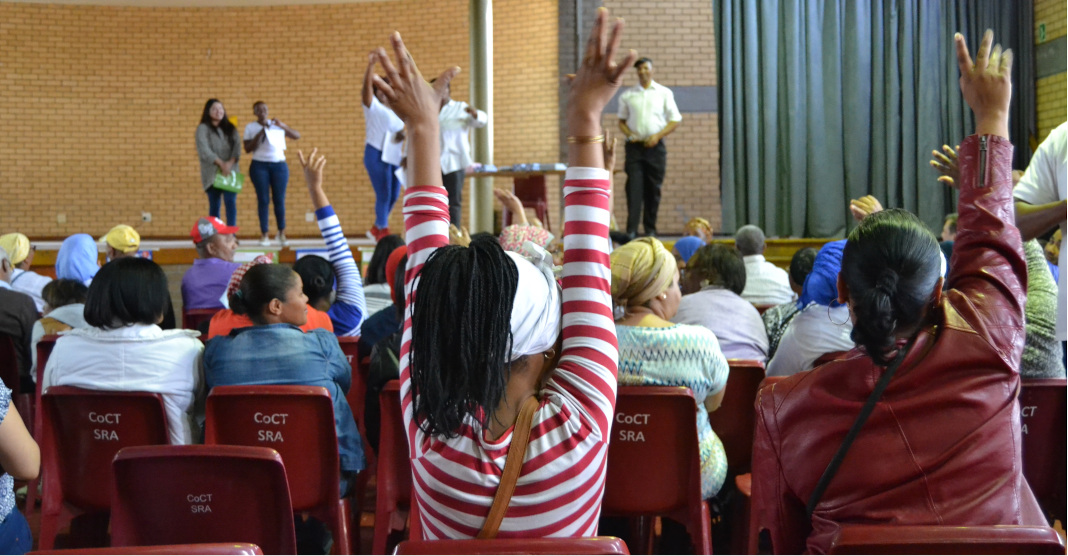A number of different terms are used to describe engagement between non-researchers and health research including public engagement, community engagement, public outreach, and public and patient involvement. This course focuses on facilitating ‘internal engagement’ processes with groups of community residents to generate creative visual materials and foster discussion and learning about health and health research. It also provides guidelines on how these visual materials can potentially be shared with other members of the public through external engagement activities and events. In addition, the course explores other avenues of engagement including the use of PVM to facilitate knowledge exchange between community residents, other members of the public, and scientists.
| Internal engagement refers to engagement that happens with and between primary participants during a PVM process External engagement refers to the use of PVM outputs to engage people other than the primary participants of a PVM process |
The term ‘participatory visual methods’ encompasses a wide range of techniques that involve people taking part in the production of creative outputs that are used to convey their knowledge, experience, opinions and ideas. Examples of PVM products include dramatizations, drawings, paintings, maps, photographs, digital stories and films. As creative forms of expression, these products can enable participants and wider audiences to see and understand other people’s situations in new ways. The outputs of PVM can thus offer novel and exciting platforms for discussion and debate, and open up fresh channels for knowledge exchange and learning.

Audience members interact during a Q&A session at a community engagement event in Delft.
The Heart of The Matter, SLF, 2016.
Many of the biggest global health challenges occur in the poorest and most marginalized areas of the world. Working with visual methods can enable those who are marginalized and often excluded from discussion and debate about medical research - such as women, youth, less-able people and the elderly - to take part meaningfully in community and public engagement.
Because participants express themselves mainly through performances or images, PVM can help to:
- transcend barriers of language and literacy
- foster interactions between non-researchers and researchers across creative platforms
- enable participants to show how they understand and experience health challenges and health-related research
- balance the dynamics of power and knowledge that are likely to exist when ‘non-expert’ community members and other members of the public are brought into discussion with scientists or other researchers
- allow community members to be seen and heard at engagement events without having to take part in live public speaking if they would prefer not to.
In 2011, the Clinical and Translational Science Awards Consortium (CTSA) set empowerment as an important ethical goal of community engagement (CTSA Community Engagement Key Function Committee, 2011). Ideally, both the process and the outcome of working with visual methods for community engagement enables a form of empowerment for all participants. The final outputs of a PVM process should have the potential to bring recognition to the value of community knowledge and its place in research prioritization, design and practice.
|
Empowerment As articulated by Kenneth Maton (2008: 5), empowerment is “a group-based participatory, developmental process through which marginalized or oppressed individuals and groups gain greater control over their lives and environment, acquire valued resources and basic rights, and achieve important life goals and reduced societal marginalization." Excerpt from the Clinical and Translational Science Awards Consortium Community Engagement Key Function Committee Task Force on the Principles of Community Engagement. Friere, P. 1970. Pedagogy of the oppressed. [translated by Myra Bergman Ramos]. New York: Herder and Herder Maton, K.I. 2008. Empowering community settings: agents of individual development, community betterment, and positive social change. American journal of community psychology. 41(1-2): 4-21. |
Working with visual methods on health-related topics also has the potential to increase participant vulnerability in a number of ways. Examples of how this can happen are described in some of the Case Studies that form a component of this course. PVM facilitators need to be aware of these possibilities and, as far as possible, be prepared to mitigate or manage the eventualities.